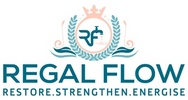
Reverse Osmosis vs Deionised Water: What’s the Difference?
Tap water troubles? Whether you are sipping or soldering, picking between reverse osmosis and deionised water matters. The short answer is that RO is perfect for the kitchen, while DI is the heavy hitter for the lab. While our In-Depth Insights into Reverse Osmosis Systems and Applications serves as your expert resource for the technical side of the tech, stay on this page to see which high-purity water really flows best for your specific project.
What is Reverse Osmosis?
Imagine this; you are pouring yourself a glass of water, expecting it to be clean and crisp. But what you don’t see are the unwanted extras: chlorine, limescale, maybe even traces of lead. That’s where reverse osmosis (RO) steps in. It’s become a go-to solution in British homes and cafés alike, all thanks to its ability to turn tap water into something much safer (and tastier).
Process Description
Reverse osmosis works a bit like a super picky strainer. It uses pressure to push water through a semi-permeable membrane. Only the pure water molecules get through. Before that happens, the water goes through pre-filters to catch larger particles and carbon filters to get rid of smells and chlorine. After the membrane does its thing, the clean water is stored and ready to pour.
Resulting Water Quality
RO water is free from most nasties like bacteria, heavy metals, and dissolved salts. It’s noticeably cleaner and often better tasting too. The only downside? It can be too clean. RO removes helpful minerals as well, which is why some people add a remineralisation stage for balance.
What is Deionised Water?
Now, think of a laboratory. Shiny surfaces, delicate instruments, and the need for precision at every step. In these settings, even a trace of minerals in the water can mess everything up. That is where deionised water (DI) becomes essential.
Deionisation Process
Unlike RO, deionisation doesn’t use a membrane. Instead, it relies on ion exchange resins whih are clever little beads that attract and swap out unwanted ions. When water passes through, minerals like calcium and sodium are removed and replaced with hydrogen and hydroxide. These form pure water, free from charge and minerals. It’s a chemical exchange rather than a physical barrier.
Resulting Water Quality
The outcome? Water with virtually no electrical conductivity which is ideal for anything that needs mineral-free precision. But be warned: DI doesn’t remove organic compounds or bacteria. So, it’s brilliant in controlled environments but not the best pick for sipping at home.
Key Differences Between RO and Deionisation
While both systems aim to purify water, they approach it differently—and the results suit different needs. Let’s break down the key contrasts.
Types of Contaminants Removed
| Contaminant | Reverse Osmosis | Deionisation |
|---|---|---|
| Bacteria & Viruses | ✅ Yes | ❌ No |
| Mineral Ions | ✅ Yes | ✅ Yes |
| Organic Compounds (VOCs) | ❌ No | ❌ No |
| Heavy Metals | ✅ Yes | ❌ Limited |
RO systems are the better all-rounders, especially for households. DI systems, meanwhile, are precise but limited to removing charged particles only.
Applications in Various Industries
| Use Case | RO | DI |
|---|---|---|
| Home Drinking Water | ✅ Very common | ❌ Rare |
| Hospitality & Catering | ✅ Ice makers, coffee | ❌ Not typical |
| Electronics Manufacturing | 🔄 Pre-treatment stage | ✅ Final rinse |
| Laboratories | ❌ Rarely used | ✅ Standard practice |
| Pharmaceuticals | ✅ For prep work | ✅ For sterile environments |
A restaurant in London might use RO for their coffee machines, while a tech lab in Cambridge counts on DI for cleaning circuit boards. Different jobs, different tools.
Advantages and Disadvantages
Each method has its benefits and its quirks. Let’s weigh them up properly.
Pros and Cons of RO
Pros:
-
Removes a wide range of contaminants, including bacteria
-
Improves water taste and smell
-
Widely available in domestic systems
-
Great for general use
Cons:
-
Wastes water (up to 3 litres per litre purified)
-
Strips away healthy minerals too
-
Requires regular filter changes
-
Needs space under the sink
Pros and Cons of Deionisation
Pros:
-
Produces ultra-pure water with low conductivity
-
No electricity needed to run
-
Excellent for scientific or industrial settings
-
Resin systems can be compact
Cons:
-
Doesn’t remove bacteria or organics
-
Resins need replacing frequently (6–12 months)
-
Not suitable for drinking or cooking
-
More expensive long-term for home users
Conclusion: Determining the Appropriate Method for Specific Needs
So, what’s the verdict on reverse osmosis vs deionised water?
Here’s the short version:
RO is ideal for everyday drinking water. DI is essential for specialist environments.
If your main concern is safe, tasty water at home, reverse osmosis is a solid pick. You will get rid of harmful contaminants, and with a remineralisation stage, it will taste just right. On the other hand, if you are working in a lab or manufacturing electronics, deionised water is your best mate. Its ultra-pure quality prevents conductivity issues and ensures accuracy. And for those who want both? Some industries use hybrid systems e.g RO first to handle the bulk, followed by DI for final polishing. It’s smart, efficient, and increasingly popular in high-tech sectors across the UK. Whatever your situation, the golden rule is this: start by testing your water. Know what’s in it and what you want out. Then choose the system that suits your goals; whether it’s better brews or brilliant breakthroughs.
More Reverse Osmosis info we think you'll love
How Many Stages Does Reverse Osmosis Have?
Reverse Osmosis and Osmosis Difference
Reverse Osmosis and Ultrafiltration
Reverse Osmosis and UV Water Filter
Reverse Osmosis vs Ultrafiltration
Reverse Osmosis vs Gravity Filter
Reverse Osmosis vs Hydrogen Water
Can Reverse Osmosis Remove Microplastics?
Reverse Osmosis Water Treatment Plant


Leave a comment